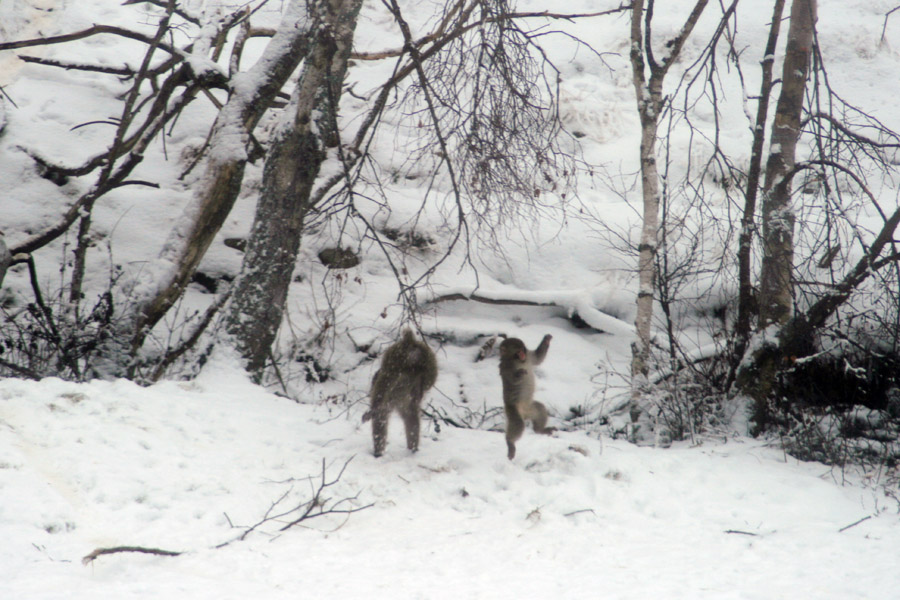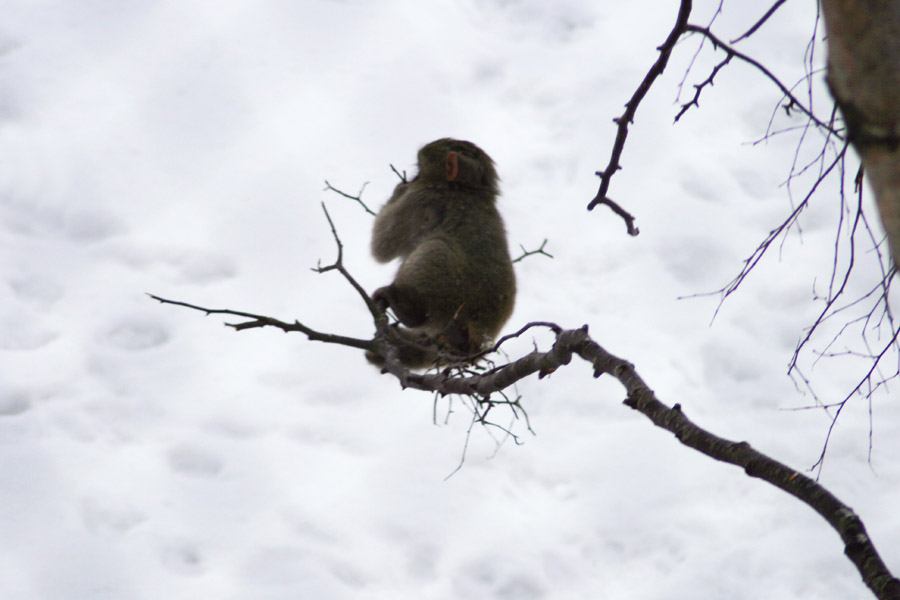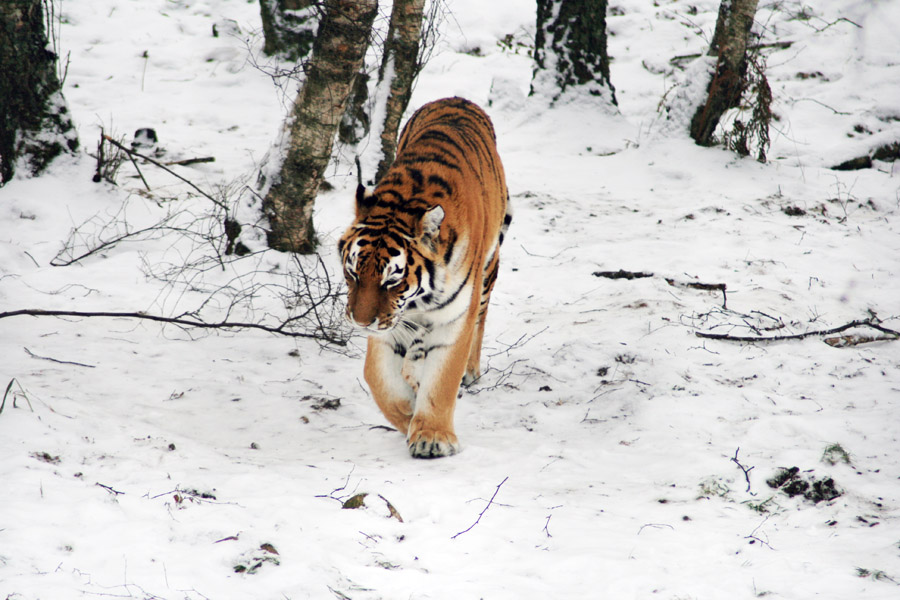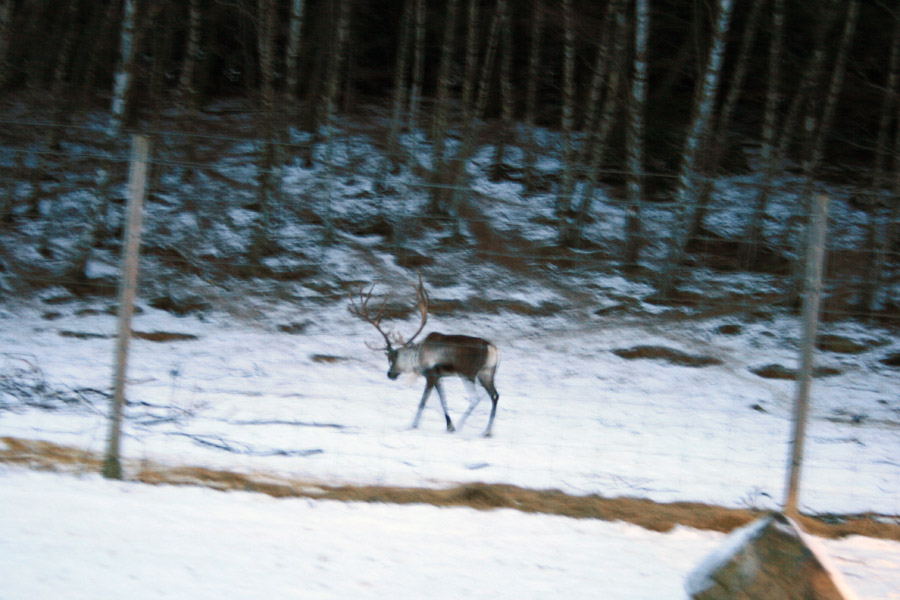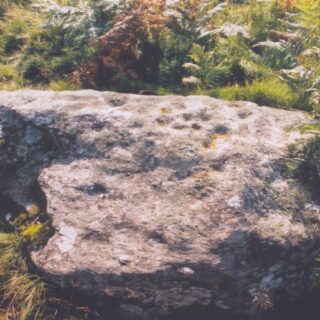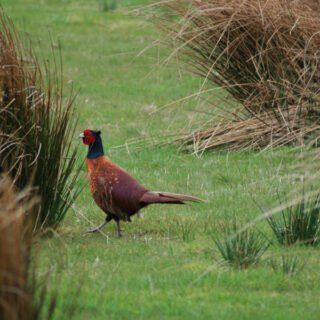What does one do on Boxing Day in Aviemore? Go to the Highland Wildlife Park of course! It was another bitterly cold sub-zero day, but luckily the park have plenty of animals well-suited to the inclement weather.
Without a doubt, the cutest animals in the park were the Japanese Macaques, also rather appropriately known as Snow Monkeys.

While most of the Macaques were sitting motionless in the cold, one cheeky little monkey was having a great time messing about in the trees.

Further into the park is the tiger enclosure, home to three Siberian or Amur Tigers. Siberian Tigers are the largest of the world’s big cats, and their size is just breathtaking.

On a slightly different scale to the Siberian Tigers are two more animals perfectly-adapted to the wintry conditions – the Snowy Owl and the Arctic Fox, both of which used to live in Scotland. A pair of owls share an enclosure with a pair of foxes.

A small herd of Bharal, or Himalayan blue sheep, seemed to be completely unconcerned by the low temperatures. This was probably warm for them, their traditional home being high in the Himalayas.
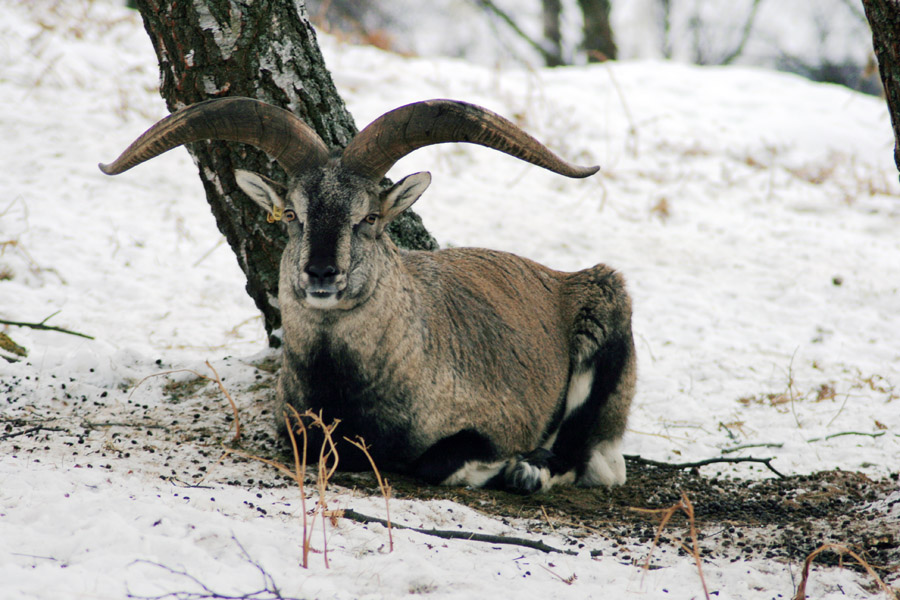
The star attractions – particularly in winter – at the Highland Wildlife Park are the polar bears, especially Mercedes. Mercedes was destined to be shot in her native Canada for repeatedly straying into towns looking for food, but she was rescued and brought to Edinburgh Zoo in 1984. In 2009 she made the trip north to a new, larger enclosure here. Apparently she really enjoys sliding down a snowy slope, and we were lucky enough to see her doing it.

In November 2010 a new polar bear was introduced, a two year old male called Walker, and it’s clear there is still an ongoing debate as to who’s boss, with the pair of them snarling at each other separated by the relative safety of a small tree.

Around the corner from the polar bear enclosure we saw another Himalayan native unperturbed by the cold, a Turkmenian Markhor keeping watch over his domain.

Yet another Himalayan animal is the Red Panda, whose bright coat offered a marked contrast to the white surroundings.

There are also some native Scottish animals, although the next one we saw was admittedly a reintroduced one. The Capercaillie is the largest member of the Grouse family and can grow up to an incredible one metre in length! It was hunted to extinction by the middle of the 18th century, but in the middle of the 19th century new birds were brought to Scotland from Norway, and a small population re-established.

The next animal we saw was another rare native, and one of my favourite animals, the Scottish Wildcat. Chunkier and more powerful than a domestic cat, there are thought to be just 400 of these beautiful animals left in the wild in Scotland.

Another sometime native next, the massive Eagle Owl. Although the Eagle Owl wasn’t considered to be a naturally resident British bird, there are now many breeding pairs across the country – possibly descendants of escapees, but more likely descended from birds that have flown over from mainland Europe.
One animal that we hadn’t managed to see, but wanted to, was the reindeer. Once native to Scotland, the European Woodland Reindeer only know lives wild in Finland and north-western Russia. Driving out of the park we spotted a solitary reindeer on the edge of the forest.






